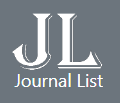A Value-based Sustainable Micro-financing for the Financial Inclusion of all low-income Groups of Pakistan: A Proposed Business Model for Islamic Microfinance
Abstract
TA large portion of the overall population of the world in general and the Muslim world in particular isliving lower thanthe poverty line.Statistically, as per latest approximations, in 2013, 10.7 percent of theglobe’s population survived on below US$1.90 a day, paralleledto 12.4 percent in 2012. Seven wealthy people in the world possess more than the GDP of 41 oppressed countries in the world. This is equal to the gross income of 567 million people. The ever-increasing gap between supply and demand has helped the microfinance industry to appear as a substitute to attaina rational portion of the financial services marketplace of the world. Subsequently, when usury was forbidden by the Muslims, the Islamic microfinance business appeared; a substituteforthe conventional microfinancebusiness. This article analyzesliterary worksas well as the statistical perspective of the conventional microfinanceindustry and the Islamic microfinanceindustry. It also exploressome prevalentmodels and products of the Islamic microfinance industry in the world in generaland in Pakistan specifically.Finally, this paper presents a sketchofthe suggestedbusiness model for sustainable development andfinancial inclusion of all low-income groups of the Pakistani society.












